Fantasy Books
The Gorey Century
Yesterday was the 100th birthday of Edward Gorey, one of the most unique, unclassifiable artists that this country has ever produced. Though he died in 2000, he has a continuing cultural presence; he certainly lives on in my life and in the lives of a great many people.
Back in the incumbency of Jimmy Carter, when I was studying theater and living in the dorms of California State University Long Beach, one year I had a roommate named Scott. Scott didn’t fit into our tight-knit little community very well, and while I’ve always prided myself on my ability to get along with everyone, I didn’t get along very well with him. We had a bumpy year together, but I will always be glad that we were roommates, because Scott introduced me to the work of Edward Gorey, and that was a priceless gift that I can never repay him for.
Edward Gorey was a man of many talents — He did scenic and costume design for the stage, winning a Tony Award in 1978 for his costume designs for Dracula (his set design for that production was also nominated) and several of his stories are about ballet, which was one of his supreme passions. Additionally, he did highly individual book covers; for several years he did them for Anchor Paperbacks (including, among many others, editions of H.G. Wells’s The War of the Worlds, Franz Kafka’s Amerika, and T.S. Eliot’s Old Possum’s Book of Practical Cats), which are highly prized today simply for their Gorey covers. He also edited and illustrated a collection of classic ghost stories (1959’s Edward Gorey’s Haunted Looking-Glass) and did covers and illustrations for several of the supernatural mysteries of John Bellairs.
Beginning in the mid-1950’s, Gorey wrote and illustrated his own very short books, and these are the works that his fame mostly rests on. (Many were published under absurdly comical names that are anagrams of his own, like Ogdred Weary or Mrs. Regera Dowdy.) Visually, they are almost always set in the Victorian or Edwardian era (the closest to our own time that I can ever remember him coming was the 1920’s) and are full of bizarre, grotesque, violent, comic, cryptic, and occasionally supernatural incidents, often involving children; in fact, they are usually “children’s books” in form if not in content. The original small hardcover volumes are hard to come by and are pricey when you can find them, but there are four large omnibus volumes, each collecting a dozen or more of the short works — Amphigorey (1972), Amphigorey Too (1975), Amphigorey Also (1983), and Amphigorey Again (2006).
The first thing of Gorey’s that I ever read was “The Hapless Child”, which chronicles the travails of a lovely little girl named Charlotte Sophia. When the story begins, she’s safely ensconced in the bosom of her loving family (“Her parents were kind and well-to-do.”) Then her father, a military man, is reported killed in a native uprising and her grieving mother wastes away and dies, leaving the girl in the cold, utilitarian hands of the family lawyer, who loses no time in sending her to a boarding school where students and staff range from the merely unsympathetic to the positively sadistic. Things rapidly go from bad to worse, and from this point on, the hapless child is subjected to every horror that could befall a person in the most lurid melodrama, all rendered by Gorey in deadpan language and meticulous pen-and-ink images. Things don’t end well for the poor child, and the first time I read her tale, tears rolled down my face, but they weren’t tears of sadness; I was literally shaking with laughter. (Once the story almost got me thrown out of the college library where I was supposed to be working, when I showed it to a friend who was unacquainted with Gorey. We just couldn’t control ourselves.)
It does no good to try and explain to someone who is appalled by “The Hapless Child” rather than delighted by it that what’s being mocked is not the suffering of an innocent child (there was no Charlotte Sophia — Gorey made her up) but rather the reflexive, self-indulgent sentimentality of a hypocritical era and of readers still shackled to its sticky standards. (And one of the things that makes Gorey a complex artist is that he both recognizes the deficiencies of the Victorian age while at the same time clearly adoring many aspects of it.) Either Gorey lands with you or he doesn’t. For myself, there’s nothing that I like more than a good, Gorey story.
Other Gorey delights are “The Willowdale Handcar”, a series of strange, seemingly disjointed incidents that can, with a little imagination and a close examination of the illustrations, be connected into a coherent (if admittedly dark) narrative. (The story features The Black Doll, a sinister, featureless figure which haunts the edges of many of Gorey’s works.) Gorey could be genuinely frightening, as in “The Insect God”, in which huge insects kidnap children and mercilessly sacrifice them to their chitinous deity, and “The West Wing”, a succession of wordless images showing various rooms in a house that you definitely wouldn’t want to spend any time in. (Gorey could make a patch of peeling wallpaper radiate unease.)
Gorey would sometimes make mere objects his protagonists. In “The Inanimate Tragedy” Pins, Needles, a Glass Marble, a Four-Holed Button, and a Piece of Knotted String become embroiled in conflicts and misunderstandings that end in murder and suicide, if those terms are applicable to the fates suffered by a Half-Inch Thumbtack and a No. 37 Penpoint. Gorey would probably say that the word “tragedy” is no more out of place with junk-drawer contents than it is with the equally mundane and transient objects that we call human beings, and in “The Abandoned Sock” you feel genuine apprehension for the sock who foolishly deserts his mate on the clothesline to go adventuring and gets used for a dust rag, chewed by a dog, caught in a tree, and picked apart by birds to use for their nests until nothing is left of it. Does the sock’s life (which it found “tedious and unpleasant” when it was pinned on the line next to its dull mate) turn out all that differently from our own personal dramas?
One of Gorey’s most famous stories is “The Doubtful Guest”, which sees an odd, penguinish-looking creature attired in tennis shoes and a striped scarf turn up one night at the house of a settled, respectable (boring!) family and proceed to turn things upside down. Without ever uttering a sound, the uninvited visitor eats the plates at dinner, tears chapters out of books, suffers fits of bad temper during which it hides all the bath towels, safeguards objects that it takes a liking to (like expensive pocket watches) by dropping them in a pond, eerily sleepwalks up and down the hallways at night, and otherwise disrupts the placid routines of the baffled family, who have no hope of ever going back to life as it was, because “It came seventeen years ago — and to this day / It has shown no intention of going away.” (Many of Gorey’s stories are written in verse.) You understand the family’s frustration and despair, but you may also feel that a little unpredictability might do them some good. I have my own Doubtful Guest — a college friend of my wife made him for me, and I was delighted to learn that Gorey had several himself, that admirers had made and sent to him. (I have a Black Doll too, but that I had to buy.)
Gorey did several alphabet books; the most well-known (images from it have appeared on calendars, tee-shirts, coffee mugs etc.) is “The Ghastlycrumb Tinies.” Here dewy-eyed tots come to shocking and painful ends (“A is for Amy who fell down the stairs / B is for Basil assaulted by bears / C is for Clara who wasted away / D is for Desmond thrown out of a sleigh). Gorey doesn’t imply that these grim events are the children’s faults, but he doesn’t imply that they aren’t, either.
Gorey wasn’t uplifting or heartwarming, (except perhaps in “The Pious Infant”, the story of Henry Clump, a little boy who is too good to live long, and thank God he doesn’t) but now and then justice is served, as it is in “The Bug Book”, one of the few Gorey stories that’s not in black-and-white. In this tale of collective security and well-earned retribution, a peaceful group of bugs have their happy society wrecked by a new bug in the neighborhood, a big, brutish interloper who, despite their best efforts to be friendly and welcoming, “broke up their parties” and “waylaid them whenever they went visiting.” After a secret meeting in the dead of night, the problem is solved by squashing the obstreperous insect flat with a big rock. His remains are placed in an envelope addressed “To whom it may concern” and a pleasant and lively social life is resumed (in Gorey’s world, clearly the happiest of happy endings).
The great Literary critic Edmund Wilson (he who disparaged detective stories and sneered at Tolkien and Lovecraft) was an early admirer of Gorey; he found the artist’s singular little books pleasingly suggestive and allusive. “I find that I like to return to them,” Wilson said. The critic was wrong about a lot of things, but he was right about Edward Gorey. Over almost a half a century, I too have continued to come back to Gorey’s strange, sinister, darkly comic world. There is truly nowhere else like it.
Edward Gorey, this contradictory man who loved attending classical ballet (he was present for every performance of the New York City Ballet for twenty-five straight years) and watching “trash TV movies on the USA Network” was sui generis, the sort of one-of-a-kind genius who can only be appreciated and enjoyed, never imitated or emulated. The mark he set was too high for anyone else to reach… or maybe it would be more accurate to say that it wasn’t too high, exactly; rather, it was too far off to the side.
Whatever deserted house, sinister garden, enigmatic landscape or dimly-lit stage your eccentric spirit now haunts, Edward Gorey, happy birthday to you. Your ashes may have been scattered to the four winds, but your work goes marching on; I fully expect your macabre miniatures to be around for at least another hundred years.
Thomas Parker is a native Southern Californian and a lifelong science fiction, fantasy, and mystery fan. When not corrupting the next generation as a fourth grade teacher, he collects Roger Corman movies, Silver Age comic books, Ace doubles, and despairing looks from his wife. His last article for us was Reading for the End of the World Redux
Chasing the Power to Save in “Telephone” by Percival Everett
Telephone is a deeply affecting story about the lengths to which loss and grief will…
The post Chasing the Power to Save in “Telephone” by Percival Everett appeared first on LitStack.
There, Wolves: Part I
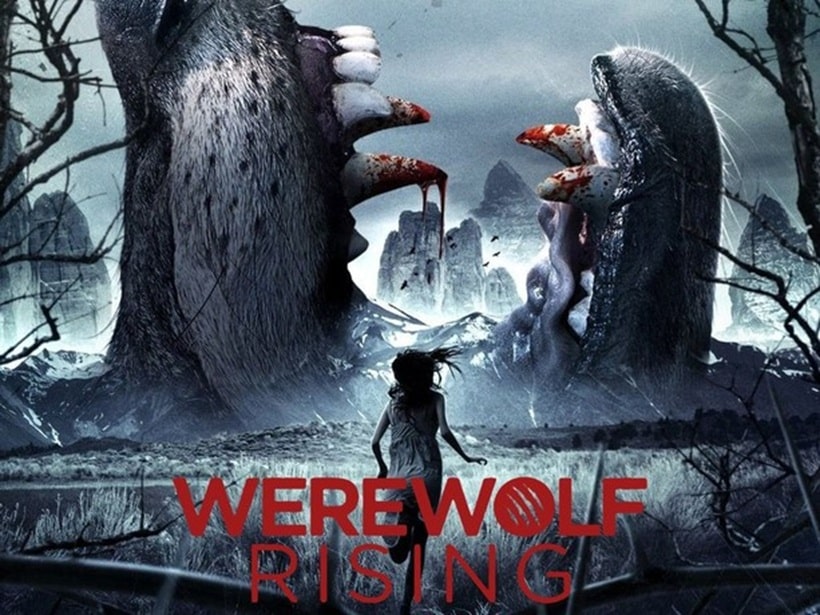 Werewolf Rising (RLJ Entertainment, October 14, 2014)
Werewolf Rising (RLJ Entertainment, October 14, 2014)
A 20 film marathon of werewolf movies I’ve never seen before.
As usual, the films must be free to stream.
I’ve got a bad feeling about this.
Werewolf Rising (2014) YouTubeMan or beast? It looks more like a hairy extra from The Hobbit.
Howling’ good time? Nope. We are off to a rip-roaring start with this dull effort shot entirely in Arkansas, if that floats your boat.
A paper thin plot is played out in a forest with a single digit, lacklustre cast and the whole shebang is shot in glorious murky-vision. The only redeeming feature might have been the beast(s), but they are rubbish.
Oh god. What have I started?
3/10
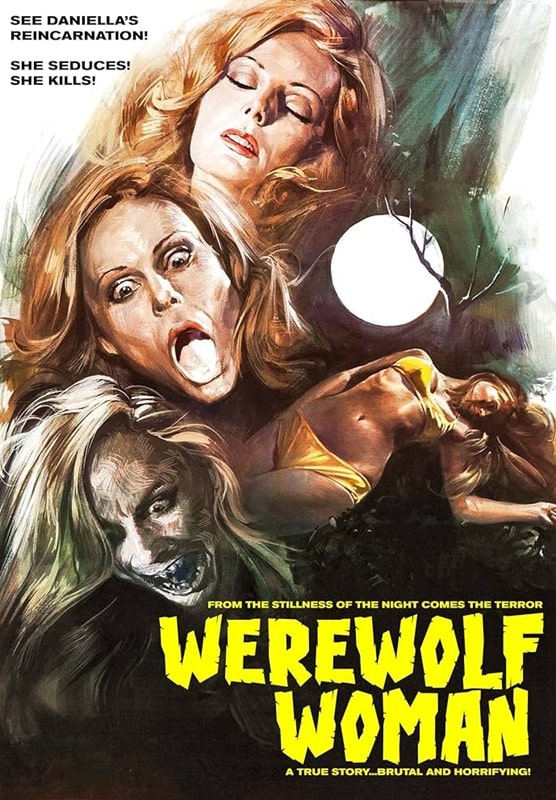
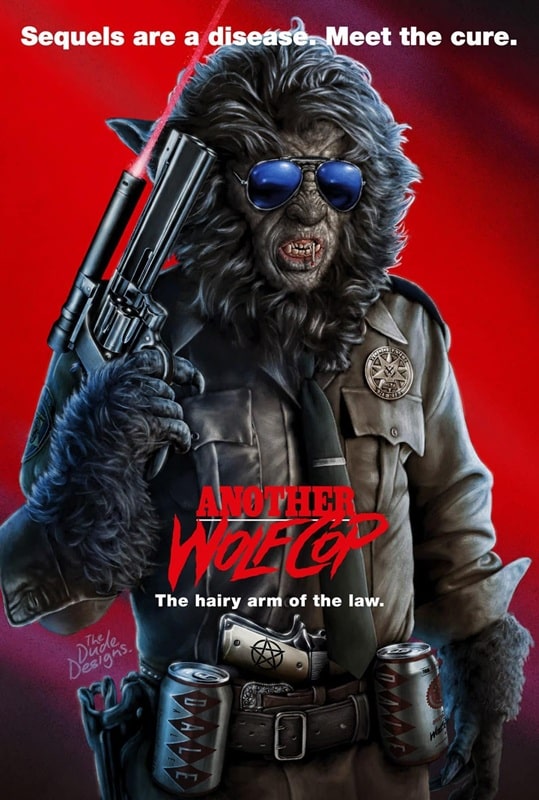
Werewolf Woman (Agorà, March 18, 1976) and Another Wolfcop (RLJE Films, July 29, 2017)
Man or beast? Naked, hairy, black-nosed lady.
Howling’ good time? Apparently, this is a favorite of Quentin Tarantino, but I swear half of his favorites are just obscure titles that he had access to while working in a dodgy video store that he could use as bragging rights. It has elements of revenge flicks that he would use in his own films, but the rest is a messy potpourri of sex, violence, and sexual violence. This being the 70s and Italian, the main feature is hair, whether it is covering the voluptuous frame of the titular lady, the upper lips of the men, or more nether-regions than a topiary enthusiast could ever dream of.
It’s a sordidly strange tale of a woman who is horrifically raped and her lover murdered, who exacts revenge in the guise of a werewolf without any transformation due to recurring dreams that she is the descendant of a werewolf. Confused? You will be. Weird, uncomfortable, badly dubbed.
Can’t say I loved it – but it had a couple of decent moments and some good old-fashioned Italian exploitation gore.
6/10
Another Wolfcop (2017) PrimeMan or beast? Great, practical, wolf. Cop.
Howling’ good time? A proudly Canadian production, this sequel takes the original concept (cop Lou Garou is bitten by a werewolf and brings his new persona to the job) and ramps up the insanity. Reptilian mutants, moustachioed parasitic stomach worms, extremely hairy sex, extremely gory deaths, Gowan on repeat and Kevin Smith yelling ‘slam a cold cock!’ at any given moment. It’s stupid as all hell and I loved it.
Bonus points for enormous werewang.
8/10
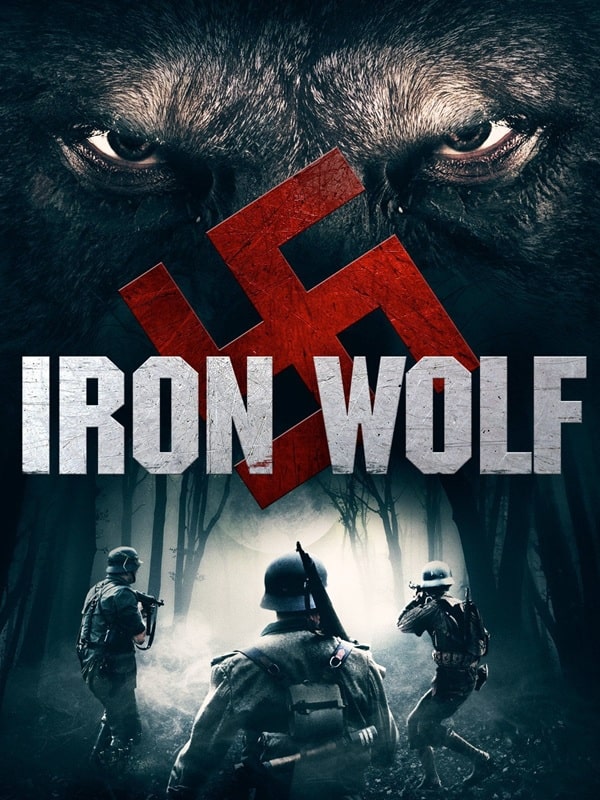
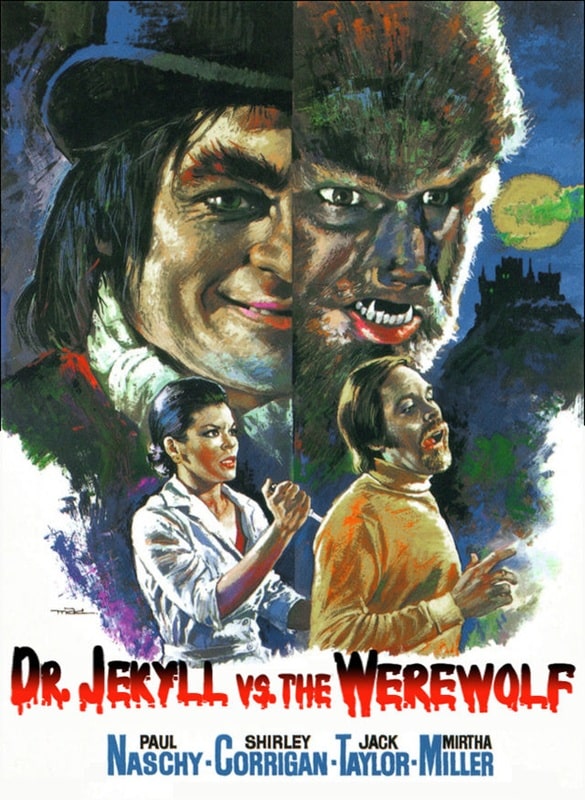
Iron Wolf (RJ Nier Films, September 13, 2013) and Dr. Jekyll vs. the Werewolf (Filmaco, 1972)
Man or beast? Ruby’s bottom of the line costume.
Howling’ good time? Don’t be fooled by the poster (or any poster for that matter), this is not a jolly werewolf romp set in WW2. The film begins that way, with some mis-matched Nazis working in a secret lab (industrial site) and showing off their werewolf that they have trained to only attack non-Nazis.
It’s cheap and cheerful, and somewhat passable, but then is brutally cut short and jumps forward in time to some extremely dull modern, German teenagers. They are hanging around the semi-ruined labs for some B.S. reason, the wolf creature gets out, and it becomes a ‘desperate fight for survival’. The direction is pretty limp, and the acting isn’t great – I really wish the German cast had been allowed to speak German and for the film to be subtitled. It makes no sense to flatly deliver the lines – lines that are flat to begin with.
As usual, the only saving grace could have been the werewolf, but this big doofus is just a dude in a Halloween wolf costume (and not the deluxe version) stuffed into a Nazi uniform. Laughably bad.
4/10
Dr. Jekyll vs. the Werewolf (1972) TubiMan or beast? Hairy-faced fella.
Howlin’ good time? I’m no stranger to Paul Naschy werewolf flicks, but this is one of the dozen movies he made that I missed. As with the other Spanish-produced films in this series, Naschy plays the wolfman, searching for a cure, and the whole shebang has that lovely dark gothic feel of the other films.
However, this one has a personality split as broad as the titular characters. The first hour is tedious, lots of sitting around talking, but then, once Dr. Jekyll’s grandson starts shooting up the wolfman, it goes batshit crazy. Cue Hyde going on a sadistic rampage, whipping every bosom he lays eyes on, go-go dancing, drunk tipping and other nefarious tomfoolery. It’s not enough to save the movie, but it is daft enough to warrant an extra mark.
5/10
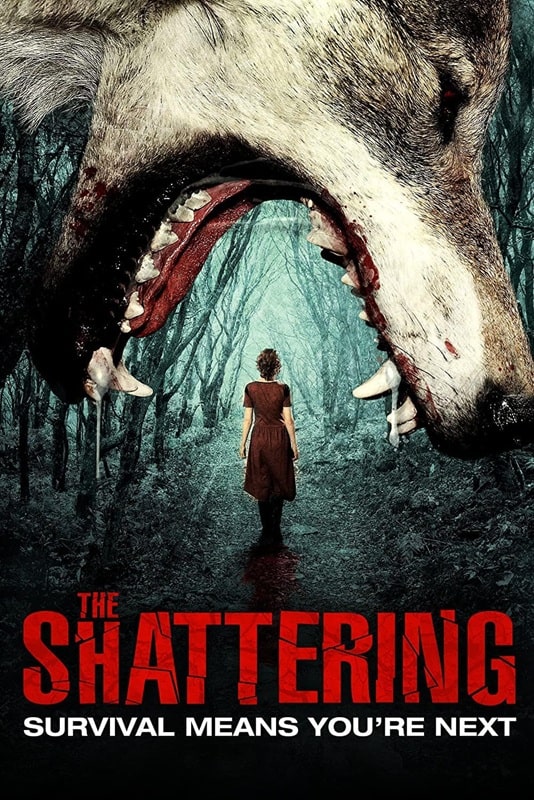
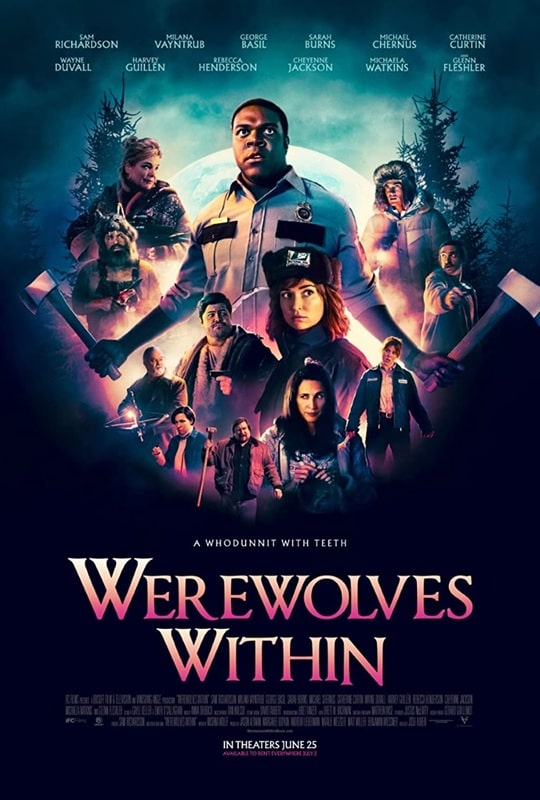
The Shattering (Film Cartel Entertainment, March 24, 2015) and Werewolves Within (IFC Films, June 25, 2021)
Man or beast? Unseen thingy.
Howlin’ good time? Let’s get this one out of the way. A group of randos are stuck in a cabin due to a bullshit plot line involving a healer. Some hunters are stuck in the woods due to some bullshit plot line about collecting wolf spit. A POV camera eats most of them. A very bold decision to not show a single werewolf in this badly shot, badly acted, werewolf flick. The only shattering that went on was in my pants when I realized I had to sit through this tedious dirge.
3/10
Werewolves Within (2021) NetflixMan or beast? Nice, practical werewolf.
Howlin’ good time? I really should have saved this until last, but I needed a little pick-me-up, and this sure hit the spot. Based on the videogame Werewolf, this film is a joy from start to finish. It’s a horror comedy in the same vein as Shaun of the Dead, even going so far as to include some Edgar Wright-type editing, and for the most part, the comedy sticks the landing.
It helps that the two leads are so likeable and awkward; Sam Richardson is perfect as a spineless park ranger, and Milana Vayntrub is adorable (and renews my pining for the aborted Squirrel Girl series). The setting is a hokey town in Vermont, full of troubled characters that put me in mind of Northern Exposure, or even Twin Peaks, and the plot weaves in a bit of social commentary about pipelines, gentrification, and acceptance.
For a further comparison, I had as much fun with this as I did with The Beast Must Die, and I even guessed correctly! Highly recommended.
9/10
Previous Murkey Movie surveys from Neil Baker include:
What a Croc
Prehistrionics
Jumping the Shark
Alien Overlords
Biggus Footus
I Like Big Bugs and I Cannot Lie
The Weird, Weird West
Warrior Women Watch-a-thon
Neil Baker’s last article for us was What a Croc, Part III. Neil spends his days watching dodgy movies, most of them terrible, in the hope that you might be inspired to watch them too. He is often asked why he doesn’t watch ‘proper’ films, and he honestly doesn’t have a good answer. He is an author, illustrator, outdoor educator and owner of April Moon Books (AprilMoonBooks.com).
The Unseelie King - Book Review by Voodoo Bride
 The Unseelie King (Maze of Shadows #4)by Kathryn Ann Kingsley
The Unseelie King (Maze of Shadows #4)by Kathryn Ann KingsleyWhat is it about:One king is dead, and the other is in chains.
Tir n’Aill perches on the edge of a knife in the wake of a series of betrayals that has shaken the fae to the core.
Abigail finds herself questioning who is friend and who is foe. When she is forced to make her decision between mercy and love, she finds her choice is one that might tear the very world apart.
Forces gather to wage war and decide the fate of Tir n’Aill. And in the center of it all, Abigail is nearly torn in two, caught between her desire to protect her new people and her love for Valroy.
For he is now the Unseelie King. The world is his to burn.
And only she can stop him.
What did Voodoo Bride think of it:*more spoilers ahead*So I gave this book a 5 star rating on Goodreads, and I stand by it, but this book destroyed me.
I know I talked mainly about Abigail and Valroy in my other reviews, but there were other really cool characters as well. Especially Anfar, the best (and probably only) friend of Valroy.
In this book things get dark, gruesome, but it seemed there could be a solution that would lead to a satisfying ending. And to be fair: there is a kind of bittersweet Happily Ever After if you don't overthink it. But the costs to Valroy and Anfar: too high in my opinion. I cried so hard over the ending. That'll teach me to fall in love with a dark creature from the Unseelie Court and his 'creature from the depth of the ocean' best friend.
All in all this is a great series, but I might be too soft for it, and too invested in friendship over the main romance.
Why should you read it:It's a really good if you can handle the dark stuff in it.
The Fiction of Edgar Rice Burroughs, Part IV: The Hollow Earth and Pellucidar
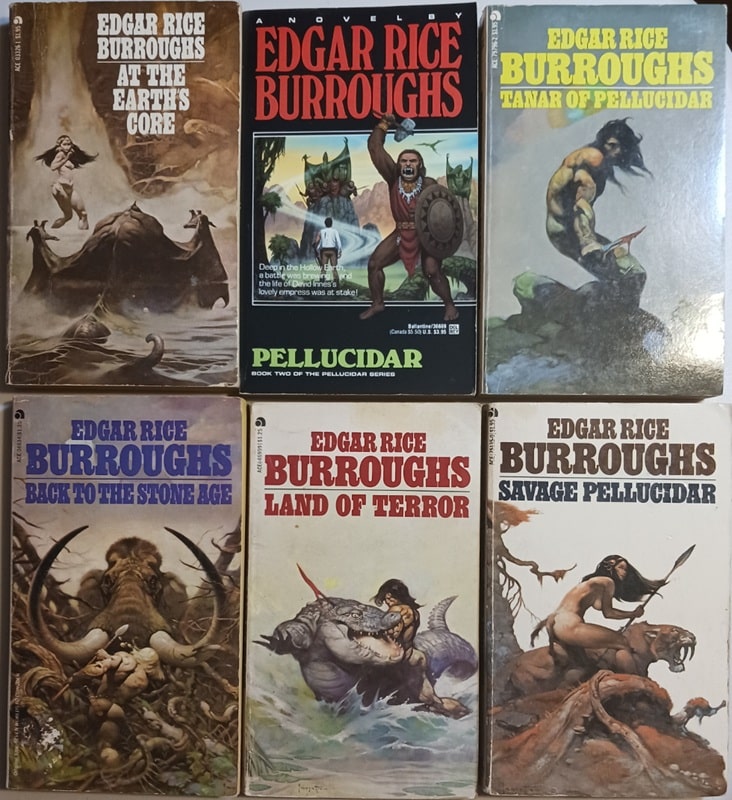 The Hollow Earth novels of Edgar Rice Burroughs: At the Earth’s Core (Ace Books, August 1978), Pellucidar (Del Rey, May 1990), Tanar of Pellucidar, Back to the Stone Age, Land of Terror, and Savage Pellucidar (Ace Books, January 1973). Covers by Frank Frazetta and David Mattingly (Pellucidar)
The Hollow Earth novels of Edgar Rice Burroughs: At the Earth’s Core (Ace Books, August 1978), Pellucidar (Del Rey, May 1990), Tanar of Pellucidar, Back to the Stone Age, Land of Terror, and Savage Pellucidar (Ace Books, January 1973). Covers by Frank Frazetta and David Mattingly (Pellucidar)
Above are my Edgar Rice Burroughs Pellucidar books. Tarzan at the Earth’s Core goes with this series as well, although I included it in Part II of this series, with my Tarzan collection. In these stories, Pellucidar is a hollow area at the center of the Earth. There are openings into it at the North and South poles, but in the initial book, At the Earth’s Core, an American named David Innes reaches the interior by riding inside a giant drill. This is kind of a reverse of the Sword & Planet plot in which the Earthman is taken outward to another world.
Pellucidar is an interesting construction and ERB clearly gave it some thought. There’s a miniature sun at the center that leads to perpetual day, and the only shadowy area on the surface of Pellucidar is an area of constant twilight beneath the bulk of the unmoving moon. The interior has no horizon because everything curves up and away from the viewer, and the land and water masses are the reverse of the surface, leaving a lot of land. The world is populated by all kinds of extinct outer lifeforms that wandered in through the polar entrances, including some dinosaurs and the remnants of the mammal megafauna.
It also contains humans, and some weird races that never existed on the surface, including the Mahars, who are winged reptilian-like beings possibly evolved from Pterodactyl-like ancestors. The Mahars rule the interior world and David Innes leads a revolt against them that is fought out during the first few books. In Tarzan at the Earth’s Core, Tarzan takes an airship into the interior world and gets involved in the war. Some of the later books are made up of stories that were originally published separately.
There are 7 Pellucidar books, listed below with first publication dates. My copies are all later releases, of course, and all from Ace Books, except for Book 2, From Del Rey. I’ve also listed the publication dates and cover artists here for my copies.
At the Earth’s Core, 1914: 1978, Frazetta
Pellucidar, 1915: 1990, David B. Mattingly
Tanar of Pellucidar, 1929: 1978, Frazetta
Tarzan at the Earth’s Core, 1929-1930 (not shown above)
Back to the Stone Age, 1936-1937: Frazetta cover (My Favorite)
Land of Terror, 1944: 1973, Frazetta
Savage Pellucidar, 1963: 1978, Frazetta
I like the Pellucidar series a lot, and it was the single biggest influence on Lin Carter’s Zanthadon, which I wrote about in a Facebook post quite a while back.
 Lin Carter’s Zanthodon novels: Journey to the Underground World, Eric of Zanthodon, Hurok of the Stone Age, Darya of the Bronze Age, and Zanthodon (DAW Books, November 1979, May 1982, February 1981, September 1981, and June 1980). Covers by Josh Kirby and Thomas Kidd (Zanthodon)
Lin Carter’s Zanthodon novels: Journey to the Underground World, Eric of Zanthodon, Hurok of the Stone Age, Darya of the Bronze Age, and Zanthodon (DAW Books, November 1979, May 1982, February 1981, September 1981, and June 1980). Covers by Josh Kirby and Thomas Kidd (Zanthodon)
The idea of a Hollow Earth that Burroughs used in his Pellucidar books, or at least of great caverns beneath the earth, is very old. Quite a few Native American tribes have origin stories that include them coming from out of hollows in the earth. Edmond Halley proposed it as a serious theory in 1692, and, of course, there’s Jules Verne’s Journey to the Center of the Earth, published in 1864.
A couple of years ago, my wife and I visited Mammoth Cave in Kentucky and saw evidence of Native Americans having visited and perhaps lived there. I also found out about a book with the lengthy title Wonderful Discovery: Being an account of a recent exploration of the celebrated Mammoth Cave, in Edmonson County, Kentucky, by Dr. Rowan, Professor Simmons and others, of Louisville, to its termination in an inhabited region, in the interior of the Earth.” I managed to find a copy online.
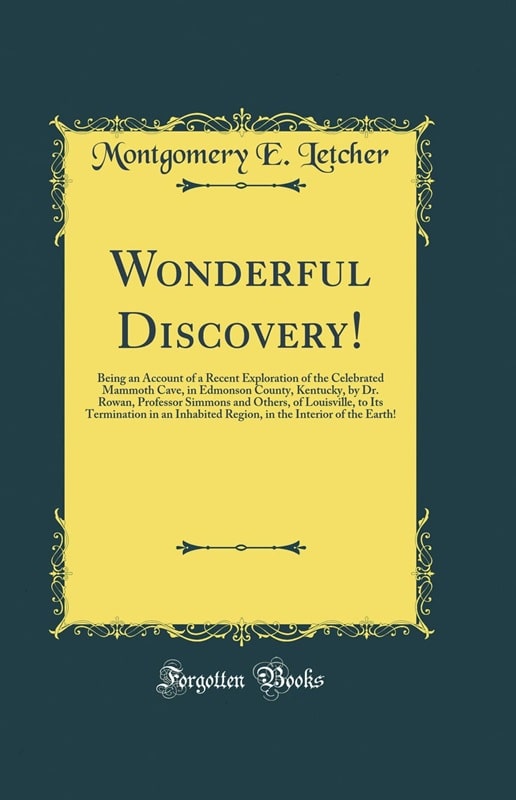 Wonderful Discovery by Montgomery E. Letcher (Forgotten Books, August 24, 2018)
Wonderful Discovery by Montgomery E. Letcher (Forgotten Books, August 24, 2018)
Written in 1839, this story purports to be a journey into the Hollow Earth through the Mammoth Cave system. It’s only a long opening chapter, and supposedly there were to be further installments. This is the only one I’m aware of. This piece has the intrepid explorers getting through the cave system into the inner world where they meet a peaceful group of humans. There’s not much excitement; no “narrative drive,” like you get from ERB.
I was unable to find anything on the author Montgomery E. Letcher. My search suggests this is the only work he ever did. The writing is, naturally, very old fashioned, and the concept was apparently derived from Halley’s suggestion of the Hollow Earth. The story precedes Jules Verne’s Journey to the Center of the Earth by decades, since that book was published in 1864. It seems likely to me, however, that Verne arrived at the idea directly from Halley’s writings rather than from having read this work. And I doubt Burroughs knew about it either.
 Map of Pellucidar from An Atlas of Fantasy by Jeremiah Benjamin Post (Ballantine Books, January 1, 1979)
Map of Pellucidar from An Atlas of Fantasy by Jeremiah Benjamin Post (Ballantine Books, January 1, 1979)
Above is a map of Pellucidar, from An Atlas of Fantasy. The same basic map is featured in some of the books as well. ERB drew it himself.
ERB and Some PastichesGetting back to ERB’s Pellucidar, there’s also a sequel to the series written by John Eric Holmes (1930 – 2010) called Mahars of Pellucidar. It follows the events of Savage Pellucidar. My copy appears to be from the first printing, from ACE, 1976, with a great cover by Boris. I actually enjoyed this tale quite a bit. It was authorized by ERB’s heirs, although they originally nixed a sequel Holmes wrote called Red Axe of Pellucidar. This was eventually published, with the consent of ERB, Inc, although I don’t have it and haven’t read it.
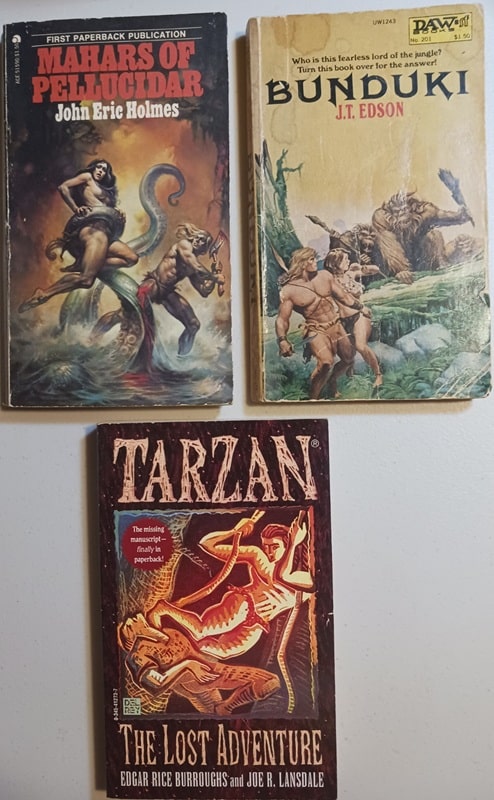 Mahars of Pellucidar by John Eric Holmes (Ace, 1976), Bunduki by J.T. Edson (DAW, April 1975), and Tarzan: The Lost Adventure, by Edgar Rice Burroughs and Joe R. Lansdale (Del Rey, June 1997). Covers by Boris Vallejo, Michael Whelan, and Raymond Verdaguer
Mahars of Pellucidar by John Eric Holmes (Ace, 1976), Bunduki by J.T. Edson (DAW, April 1975), and Tarzan: The Lost Adventure, by Edgar Rice Burroughs and Joe R. Lansdale (Del Rey, June 1997). Covers by Boris Vallejo, Michael Whelan, and Raymond Verdaguer
The other books I have shown above with Mahars is Joe Lansdale’s (1951-) fleshed out Tarzan novel Tarzan: The Lost Adventure, which he wrote from a long outline found in ERB’s effects after his death. It’s not quite a pastiche. Nor is it my favorite book from Lansdale, who has written many truly wonderful works. This is from Del Rey, first published in 1995. The cover is by Raymond Verdaguer. I’m sure this is perfectly competent work of art but it didn’t do much for me, and I don’t understand why they didn’t use one of the artists who did the great interior sketches, such as Gary Gianni or Michael Kaluta.
The last pastiche shown here is Bunduki, by J. T. Edson (1928 – 2014), cover by Michael Whelan. It features Tarzan’s adopted son and adopted granddaughter (Bunduki and Dawn). It throws us right into a mystery. Bunduki wakes up in a tree in a tropical jungle, but it isn’t Africa. He’s amazed since he was in a Land Rover that ran over a cliff and should have been dead. Dawn was with him but is missing. It turns out that the two have been mysteriously transported to another world, which turns out to be a counter-earth (opposite our Earth) called Zillikian. This makes it essentially a Sword & Planet novel, although pretty light on the sword part.
Edson wrote three approved novels of Bunduki and a fourth one and some short stories that were not approved by the ERB heirs. I’ve only read the first one but the complete series is:
1. Bunduki, 1975
2. Bunduki and Dawn, 1976
3. Sacrifice for the Quagga God, 1976
4. Fearless Master of the Jungle, 1980
Edson had written a partial fifth novel called Amazons of Zillikian, which was published in 2023. I’ve never seen it. Edson, a British author, was best known for his westerns, particularly a very long series about the Floating Outfit, which ran to 66 books. I’ve read one of those, which was rather intriguing since it involved Cowboys and Aliens.
I might have picked up the other Bunduki books but they are exceedingly expensive in paperback. They are cheap for the Kindle but I’ve got way too many books on Kindle already.
Previous installments in this series include:
The Fiction of Edgar Rice Burroughs, Part I: Sword and Planet
The Fiction of Edgar Rice Burroughs, Part II: Tarzan and The Land That Time Forgot
The Fiction of Edgar Rice Burroughs, Part III: The Westerns and The Mucker
Charles Gramlich administers The Swords & Planet League group on Facebook, where this post first appeared. His last article for Black Gate was The Fiction of Edgar Rice Burroughs, Part III: The Westerns and The Mucker.
Book Review: Greenteeth by Molly O’Neill
I received a review copy from the publisher. This does not affect the contents of my review and all opinions are my own.
Mogsy’s Rating: 4 of 5 stars
Genre: Fantasy
Series: Stand Alone
Publisher: Orbit (February 25, 2025)
Length: 320 pages
Author Information: Website
Here I go again, writing a review for another historical fantasy novel inspired by fairy tales and folklore. That said, every so often, a book will emerge that puts a fresh spin on an old story or bases its premise on lesser-known mythological creatures. I, for one, had never heard of Jenny Greenteeth, or Wicked Jenny, before picking up Greenteeth by Molly O’Neill. A kind of bogeyman-type water monster from English folklore, her name was used to warn careless children away from the treacherous shores of lakes and rivers, lest Jenny pulls them in and drowns them. Huh. It’s always great to learn something new.
Obviously, the novel Greenteeth centers on this terrifying figure, who is typically depicted as an evil hag ready to snatch her unsuspecting young victims and drag them into the murky depths. O’Neill, however, prompts readers to look at Jenny in a whole new light. She’s a monster, all right. But monsters can have feelings too, and they can sometimes be the hero instead of the villain. Living in her secluded lake, Jenny can get lonely. And whenever a human wanders close to her abode, she just can’t help her curiosity.
One day, her inquisitive nature leads to a decision that changes everything. Accused of witchcraft, a woman named Temperance from a nearby village is thrown into the lake by an angry mob led by their fanatical new preacher. Against her better judgment, Jenny chooses to save her, sheltering Temperance and letting her recover in her lair. Soon, the two of them find themselves in an alliance against an emerging foe that threatens both Jenny’s lake and Temperance’s family. Bound by magic, the two of them seek help from Brackus, a traveling goblin trader who deals in magical reagents and information. The trio next sets out on a quest to save their home, a journey that takes them across the lush British landscape and even to the very heart of the faerie realm.
There’s a lot to love about Greenteeth. The world-building is particularly robust, immersing readers in its rich atmosphere as well as the myths that inspired the characters and setting. The author doesn’t skimp on the details; you’ll notice how elements from all kinds of sources make their way into the novel, including Arthurian legends, Old English literature, Celtic mythology, and real history. Her prose is also very well suited to the vibes she wants to convey—a world that feels both grounded and magical, neither fantasy nor reality but straddling that in-between space, giving it all a dream-like quality.
And yet, this approach also has the downside of making the plot feel overly simplistic, almost like a children’s tale. This became especially true when Jenny, Temperance, and Brackus were tasked to do a bunch of what were essentially fetch quests, a narrative structure that’s both formulaic and predictable. At times, even the characters’ personalities felt underdeveloped, reduced to broad emotional strokes that, unfortunately, ended up defining them. One of the story’s most significant conflicts, for example, stemmed from little more than Jenny throwing a massive temper tantrum. While it’s an incredibly effective way to humanize our monstrous protagonist, I confess to being somewhat disappointed that, under all those sharp edges which made Jenny so mysterious and intriguing, all we got was a petulant child.
Still, for a debut novel, Greenteeth is an impressive achievement and an excellent entry into its genre category. Molly O’Neill’s love of fantasy and folklore is clear from her descriptive prose, as is her affection for the legendary figure of Jenny Greenteeth, whom she writes about with care and compassion. Sure, there were a few things that could have used more polish, but despite these flaws, Greenteeth showcases a promising new voice in fantasy. While it might not be anything groundbreaking, I found it to be a very worthwhile and enjoyable read.
![]()
![]()
Goth Chick News: Getting Our Heavy Metal Back…
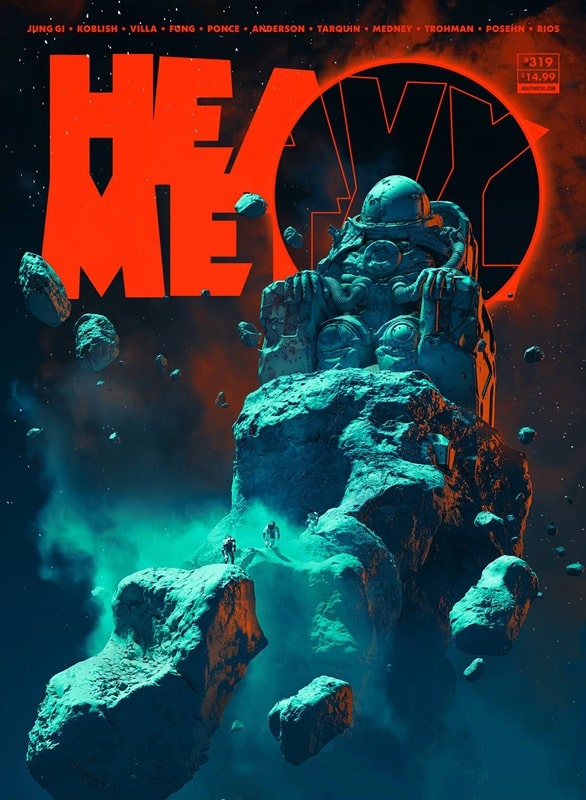 Heavy Metal #319, the penultimate issue of the original run (November 2022). Cover by Pascal Blanche
Heavy Metal #319, the penultimate issue of the original run (November 2022). Cover by Pascal Blanche
Okay, strictly speaking, this topic doesn’t fall into a standard (notice I didn’t say “normal”) Goth Chick category. But bear with me for a short story.
A long time ago in a small midwestern town far, far away, I experienced my first hardcore crush. The subject in question was not only tantalizingly a few years older than me but he was decidedly gothy in a dark-warrior kind of way. Therefore, in my youthful opinion, he was perfection on two feet. That same year as I was sitting cross-legged on the floor of my local bookstore my eyes fell on an issue of Heavy Metal magazine where low and behold was my crush, or someone who looked darn close, personified in all his brooding magicalness, right there on the cover. That day my allowance went to my first issue of Heavy Metal and though I was a rabid fan for years afterward, I admittedly became hit and miss, buying only sporadic issues throughout the 2000’s.
Heavy Metal magazine, which had been in constant publication since 1977, printed its last issue in 2022 after a series of attempts to keep it viable, and an era came to an end.
Until now.
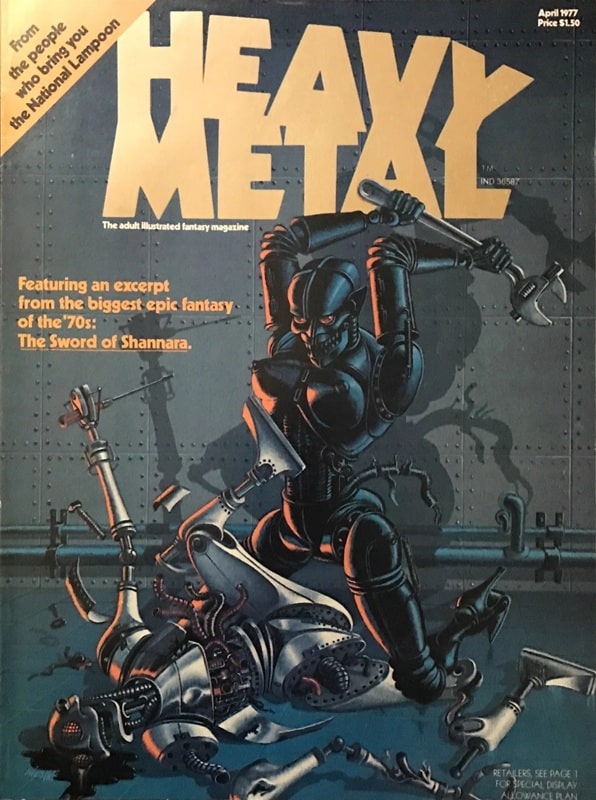 Heavy Metal issue #1, April 1977. Cover by Jean-Michel Nicollet
Heavy Metal issue #1, April 1977. Cover by Jean-Michel Nicollet
Before we get to that, let’s back up for some history.
Heavy Metal debuted in April 1977, bringing avant-garde European comic art and adult-oriented storytelling to American readers. Inspired by the French magazine Métal Hurlant (“Screaming Metal”), Heavy Metal was launched by Leonard Mogel, who licensed the rights to translate and publish content from its French counterpart. The magazine quickly distinguished itself with its blend of science fiction, fantasy, horror, and erotica, rendered in fantastic artwork and experimental narratives.
In its heyday, the contributors to Heavy Metal included legendary artists like Moebius, H.R. Giger, and Philippe Druillet, alongside American talents such as Richard Corben. Heavy Metal became the go-to publication for visionary creators, showcasing serialized stories, one-shot comics, and memorable (and boy were they memorable) covers that pushed boundaries all over the place.
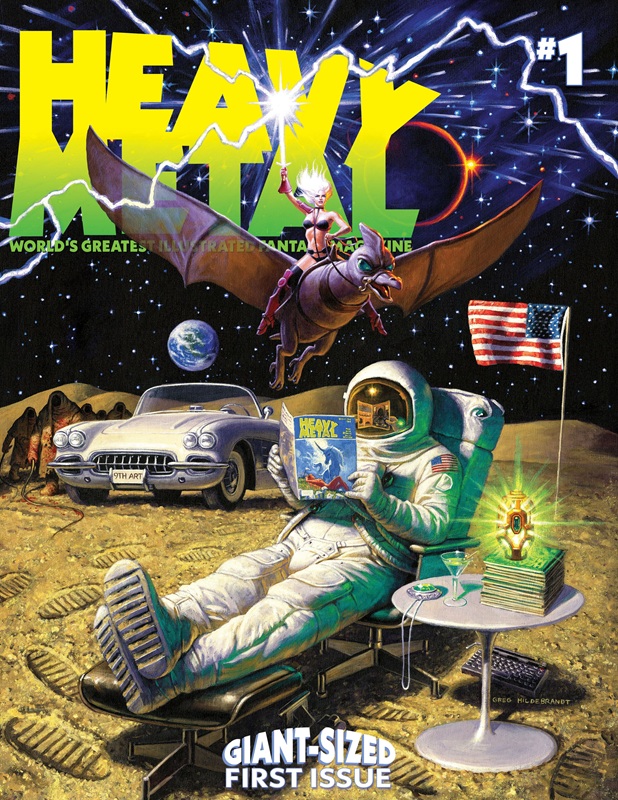 Heavy Metal #1 (April 30, 2025). Cover by Greg Hildebrandt
Heavy Metal #1 (April 30, 2025). Cover by Greg Hildebrandt
The magazine reached a broader audience with the release of the cult animated film Heavy Metal (1981), an anthology of shorts inspired by its comics and featuring a soundtrack of iconic rock and metal bands. This cemented its reputation as a cultural touchstone for fans of both countercultural comics and rock music.
Over the years, Heavy Metal evolved under various editors and owners, including Kevin Eastman, co-creator of Teenage Mutant Ninja Turtles. In January 2014, its ownership transitioned to digital and music veteran David Boxenbaum and film producer Jeff Krelitz. Eastman, though stepping back from majority control, remained as publisher until 2020 and retained a minority stake in the magazine under Heavy Metal Media, LLC.
In early 2020 CEO Matthew Medney and “Creative Overlord” David Erwin (formerly of DC Entertainment) took the helm. They launched new publishing initiatives, Virus and Magma Comix, though neither gained much traction. In 2021, Heavy Metal celebrated its 300th issue, featuring work by legendary artists and tributes to its cultural impact.
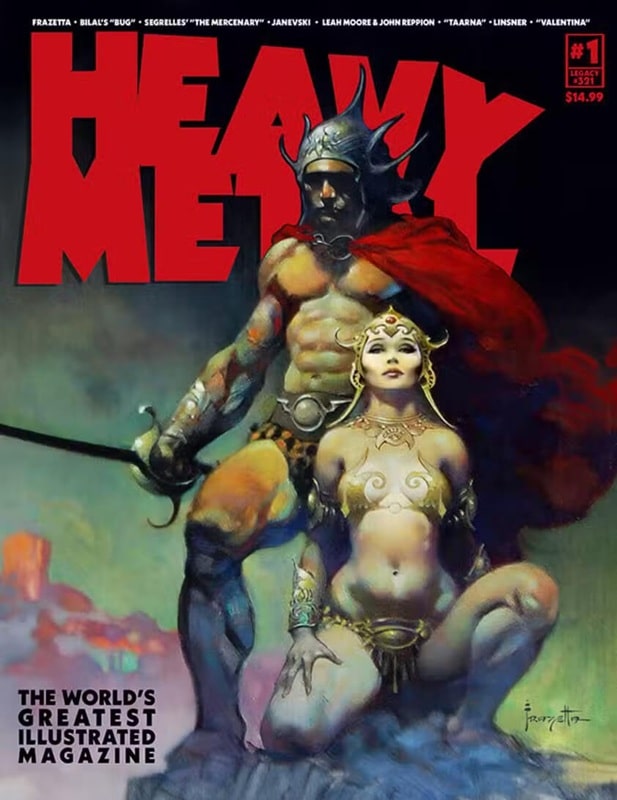 Heavy Metal #1, Sword & Sorcery variant (April 30, 2025). Cover by Frazetta.
Heavy Metal #1, Sword & Sorcery variant (April 30, 2025). Cover by Frazetta.
Financial struggles loomed, leading to a partnership with Whatnot Publishing in 2022 to produce future issues. However, cash flow problems forced Heavy Metal to cease publication in December 2022, ending its continuous run since 1977. Despite efforts to revive operations and fulfill obligations, only one additional issue was produced, and the magazine was officially canceled in mid-2023.
Which brings us to today.
In October 2024, Heavy Metal International, LLC announced a relaunch planned for 2025, backed by a Kickstarter campaign to fund it. The campaign had a modest $5000 goal but nearly 11,000 fans proceeded to blow that right out of the water and contributed a whopping $781K. HMI put together this short video announcing the comeback of the magazine so check it.
Heavy Metal magazine (new) issue 1 is set to drop in April in stores, and the magazine’s website indicates that subscriptions to the new version will be available there soon. I’m definitely going to give this a look when it hits shelves to see if Heavy Metal was a point in time, or if it can be successful in this era.
Thoughts?
Spotlight on “The Paris Express” by Emma Donoghue
The Paris Express, a sweeping historical novel about an infamous 1895 disaster at the Paris…
The post Spotlight on “The Paris Express” by Emma Donoghue appeared first on LitStack.
On McPig's Wishlist - Hemlock & Silver
I totally need this!
 Hemlock & Silverby T. Kingfisher
Hemlock & Silverby T. KingfisherFrom New York Times bestselling and Hugo Award-winning author T. Kingfisher comes Hemlock & Silver, a dark reimagining of “Snow White” steeped in poison, intrigue, and treason of the most magical kind.
Healer Anja knows little of politics but much of poisons. When she is summoned to treat the mysterious illness afflicting the king’s daughter, she finds herself against the clock, desperate to track down the source of the poison killing Princess Snow. But the chance discovery of a strange alternate world inside a magic mirror leads Anja to darker discoveries, including what really happened to Snow’s dead sister, Rose, and why their mother seemingly went mad and cut out her heart.
Aided by a taciturn bodyguard, a narcissistic cat, and a late Renaissance understanding of the scientific method, Anja must navigate the mysteries of the mirror world before the dark queen that dwells within rises to threaten them all.
Expected publication August 19, 2025
Book review: Witchcraft for Wayward Girls by Grady Hendrix

Book links: Amazon, Goodreads
ABOUT THE AUTHOR: Grady Hendrix is the author of the novels Horrorstör, about a haunted IKEA, and My Best Friend's Exorcism, which is like Beaches meets The Exorcist, only it's set in the Eighties. He's also the author of We Sold Our Souls, The Southern Book Club's Guide to Slaying Vampires, and the Final Girl Support Group!
He's also the jerk behind the Stoker award-winning Paperbacks from Hell, a history of the 70's and 80's horror paperback boom, which contains more information about Nazi leprechauns, killer babies, and evil cats than you probably need.
And he's the screenwriter behind Mohawk, which is probably the only horror movie about the War of 1812 and Satanic Panic.
You can listen to free, amazing, and did I mention free podcasts of his fiction on Pseudopod. He also does a podcast called Super Scary Haunted Homeschool.
If you're not already sick of him, you can learn all his secrets at his website.
Publisher: Berkley (January 14, 2025) Length: 468 Formats: audiobook, ebook, hardcover, paperback
Grady Hendrix strikes again, this time with Witchcraft for Wayward Girls. He’s trading haunted houses for something much scarier - societal judgment, systemic abuse, and the 1970s institution of unwed mothers’ homes.
The story follows 15-year-old Neva Craven, a pregnant teen dragged by her irate father to Wellwood House, a grim institution in Florida where “wayward girls” forced to give up their babies. Renamed Fern, Neva bonds with her fellow captives - budding revolutionary Rose, sharp Zinnia, and sweet Holly. These girls have been abandoned, dismissed, and exploited by the very people who should protect them.
While there are witchy parts and mischief, the real horror here lies in the everyday atrocities - the crushing weight of societal judgment, toxic families, and the grim realities of childbirth. Fair warning: if you’re squeamish about body horror, this one might hit hard. The story here hits hard, and it’s only Hendrix’s humor and warmth that keep things from sinking into despair.
As mentioned, things take a turn for the magical when a cryptic librarian offers Fern an intriguing book, titled How to Be a Groovy Witch. Things get complicated and sinister when girls play with spells and have their revenge. It’s worth noting the revenge they seek is hard won and comes at a cost, but oh, is it satisfying to see the power dynamics shift, even briefly. The magic and witchcraft parts were most interesting to me and I’ll admit the ending was a bit of a disappointment, but I can’t say why because spoilers.
Despite the heavy themes-shame, injustice, and society’s knack for blaming teenage girls for pretty much everything-Hendrix balances it all with a light touch. If you like your horror with heart, Witchcraft for Wayward Girls is worth picking up. It’s a little spooky, a little sad, and satisfying.
Following in the Steps of Robert E. Howard: The Eye of Sounnu by Schuyler Hernstrom
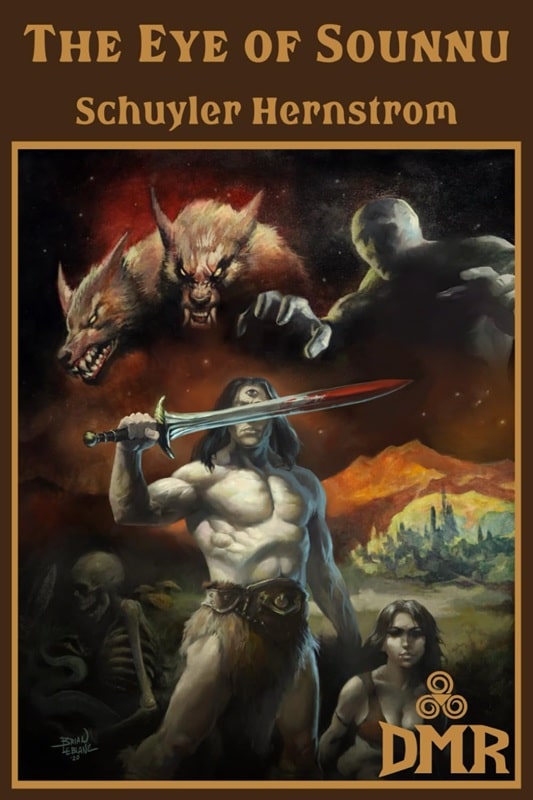
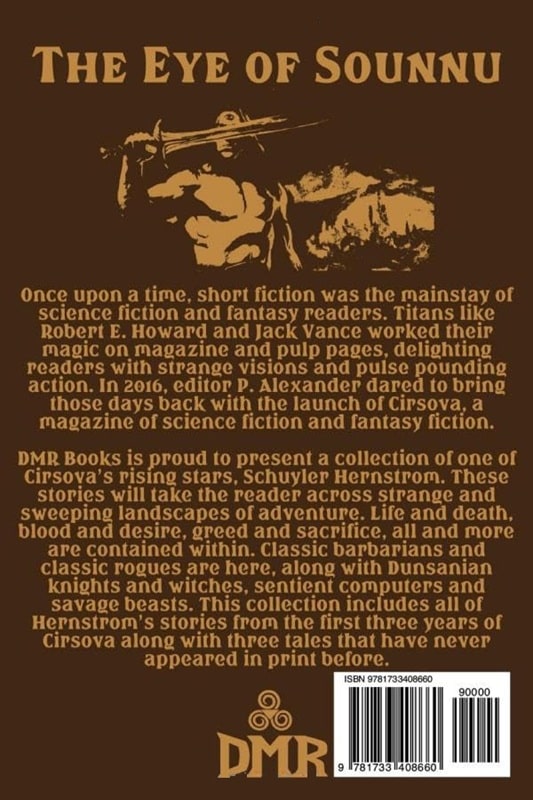
The Eye of Sounnu (DMR Books, May 3, 2020)
The concept of barbarism vs. civilization is a topic that Robert E. Howard often explored in his incredibly crafted fiction. Other authors, many inspired by Howard, have explored the concept through their own creations.
Notable among these is modern sword-and-sorcery author Schuyler Hernstrom, whose collection of short stories, The Eye of Sounnu, was published by DMR Books. The collection contains a wonderful story called “Mortu and Kyrus in the White City,” which features northland, pagan barbarian (Mortu) and his learned companion (Kryus), a monotheistic monk who suffers a curse and now lives in the body of a monkey — but that does not preclude him from waxing philosophically about the world and mankind’s place in it.
There was an exchange between the two that I recently read, and I had to reread it, and then reread it again, because I enjoyed it so much, so I share it here, for my friends of similar interests.
(This takes place shortly after the two arrived in “the White City.”)
Mortu whispered to his friend. “How old do you reckon she is?”
Kyrus shrugged. “Perhaps thirty-five, forty? Forty-five at the oldest.”
“Everyone here, the men and the women, all seem to be the same age save Nathia and the (two) children. Where are the families? Where are the elderly?”
“In mankind’s long history, many people have struck off in order to found their idea of a utopia. I suspect the denizens of the White City are such a group. All those that turn away from society in such a way meet a similar fate, gradual disillusionment and dissolution.”
“Utopia?”
Kyrus’ tone became pedantic. “A perfect society.”
Mortu scoffed. “There is such a place, the north, where my people live as the gods intended.”
“My young friend, once again the essential concepts escape your grasp, like eels slipping from your thick fingers. While you may wrongly believe the savages that raised you to be of a perfect society, I refer to man’s long dream of living without inequality or strife.”
The barbarian scoffed again. “Life is conflict. We are but wolves that walk on two legs. Build your temples, write your books, nothing will ever change.”
Lastly, I’d like to thank my friend Morgan for recommending this excellent collection a few years ago. I am enjoying it immensely.
Order copies directly from DMR’s website.
Jeffrey P. Talanian’s last article for Black Gate was Roy Thomas’ Barbarian Life. He is the creator and publisher of the Hyperborea sword-and-sorcery and weird science-fantasy RPG from North Wind Adventures. He was the co-author, with E. Gary Gygax, of the Castle Zagyg releases, including several Yggsburgh city supplements, Castle Zagyg: The East Mark Gazetteer, and Castle Zagyg: The Upper Works. Read Gabe Gybing’s interview with Jeffrey here, and follow his latest projects on Facebook and at www.hyperborea.tv.
7 Author Shoutouts | Authors We Love To Recommend
Here are 7 Author Shoutouts for this week. Find your favorite author or discover an…
The post 7 Author Shoutouts | Authors We Love To Recommend appeared first on LitStack.
The Unseelie Throne - Book Review by Voodoo Bride
 The Unseelie Throne (Maze of Shadows #3)by Kathryn Ann Kingsley
The Unseelie Throne (Maze of Shadows #3)by Kathryn Ann KingsleyWhat is it about:When the prize is death, some games are better lost than won.If she loses, she becomes his queen, and he unleashes war across Earth and Tir n’Aill alike. If she wins, he dies. The answer seems clear. But then why can’t she bring herself to want victory?
The longer Abigail wanders through his Maze of Shadows, the less sure she becomes of anything—allies, enemies, wrong, right, evil, good, hate…and love. With every twist and turn, her heart is more fully trapped in his snare.
Facing the choice of whether to win—and kill the Bloody Prince—or lose and become his queen, Abigail can’t decide which is worse. In fact, she is starting to think that she might no longer want to win at all.
No matter the cost.
What did Voodoo Bride think of it:*spoiler ahead*The second book felt a bit like filler, even though I enjoyed it very much. This book is back on track, and there's lots of good scenes between Abigail and Valroy.
I was so invested in this story and the likely doomed romance between them. They might be attracted to each other, but are on opposite sides. Can you be both lovers and enemies?
Then there's finally the first 'all the way' scene and I was... disappointed. It was more about how looooong Valroy is (Peter Steele would have liked a word, were he still alive) than it being satisfying after all the tension and waiting.
Luckily later scenes had the steam and enjoyment I really needed after all the bad things that happened to Abigail since the start of this series.
And then the ending!
I immediately needed the last book to see if this series could end happily or if I would get my heart broken.
Why should you read it:It's a really addictive if sometimes brutal Dark Fantasy (Romance?)



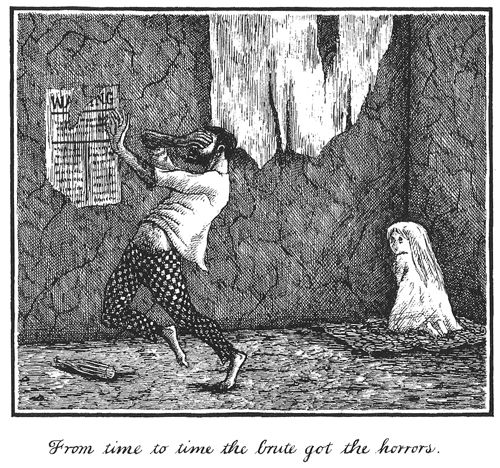
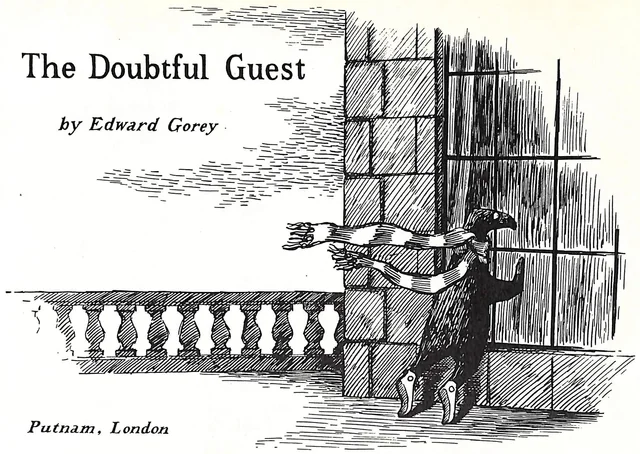
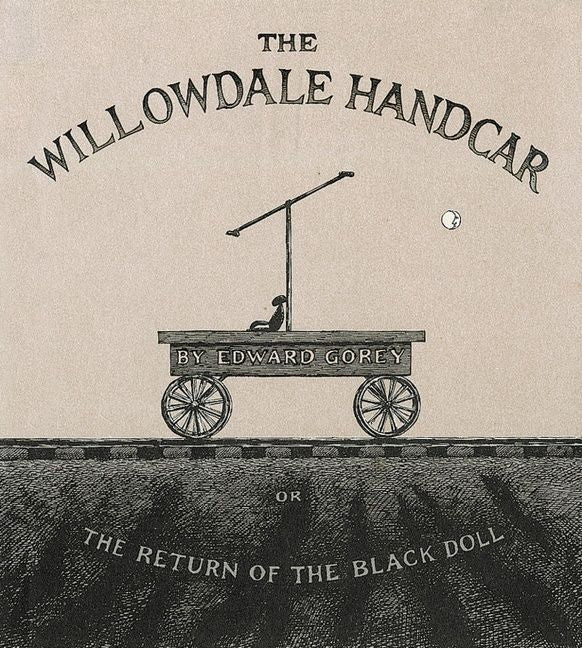

Recent comments